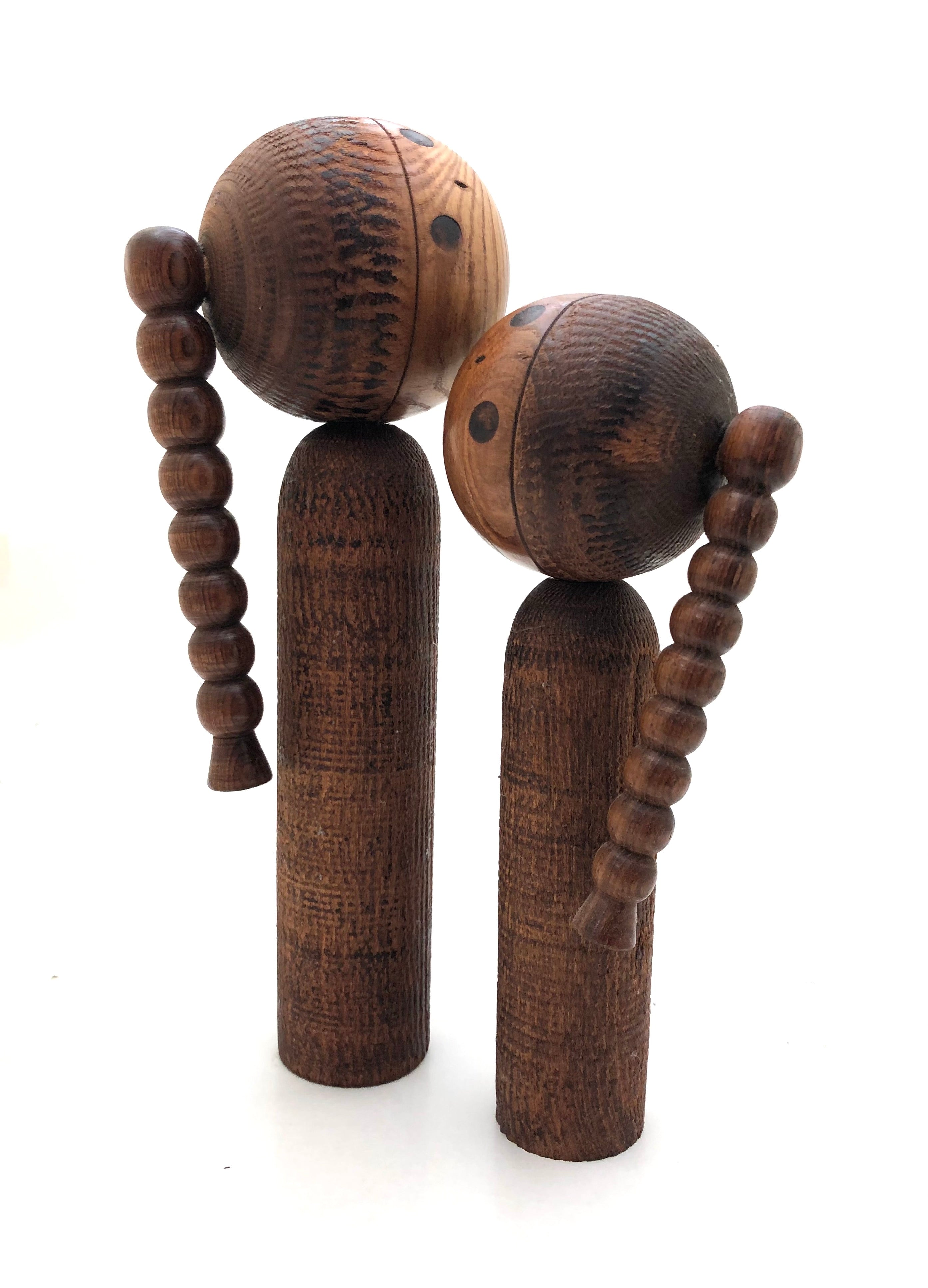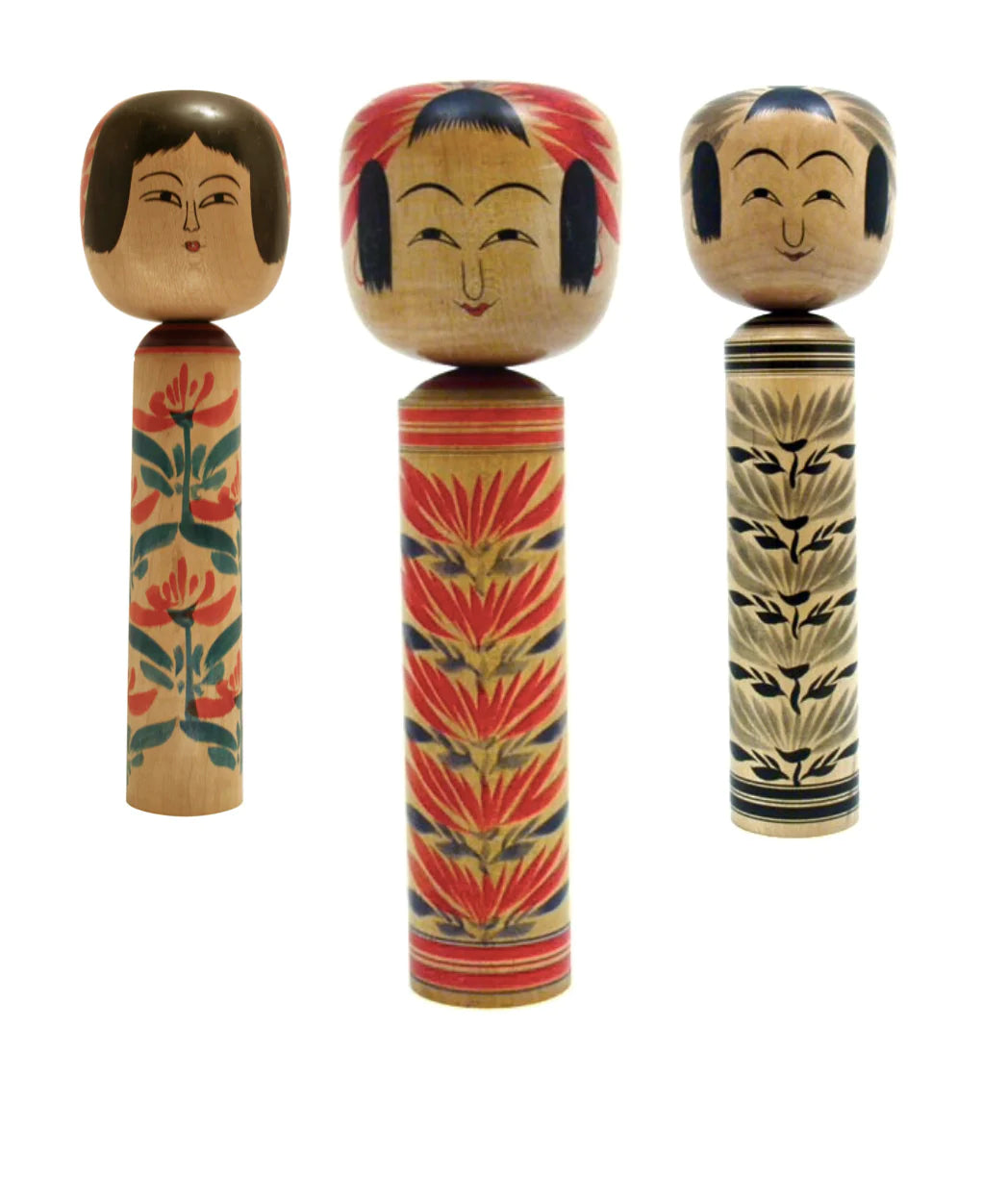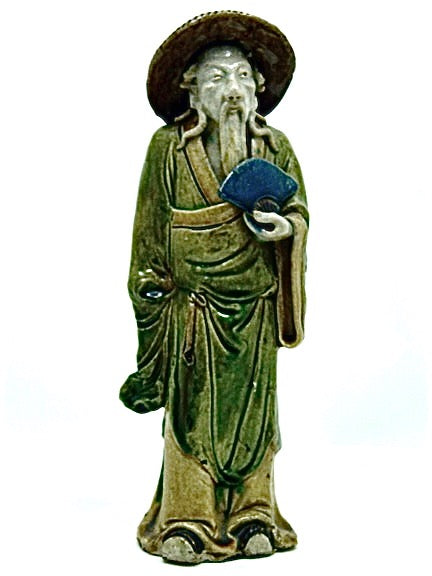
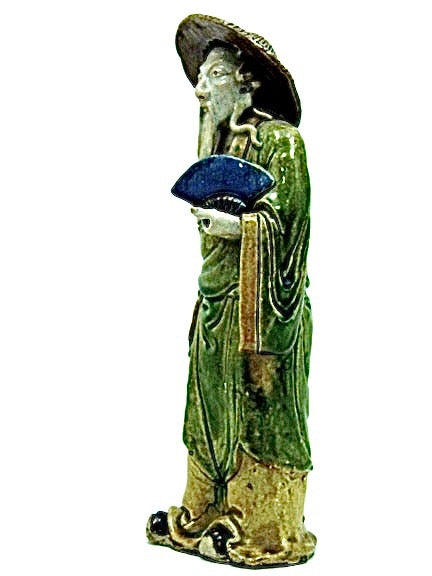
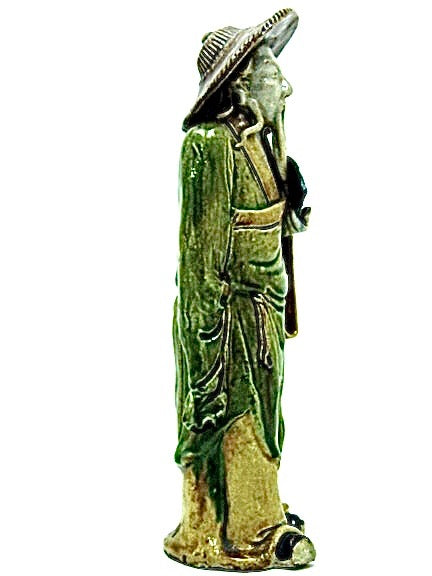
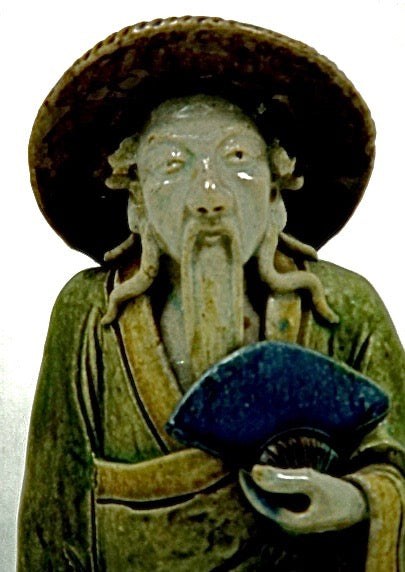
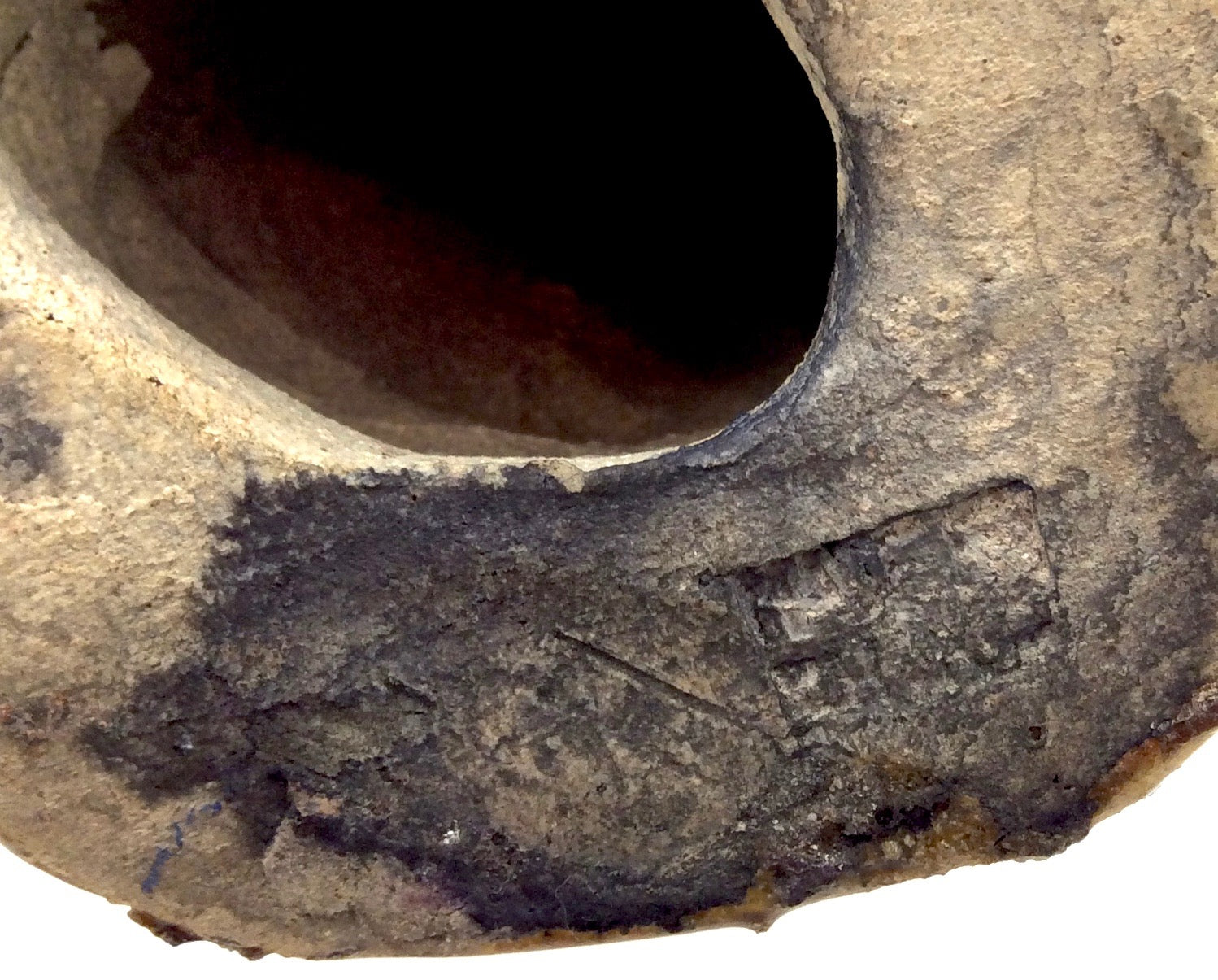
Antique Chinese Republic Shiwan (Shekwan) Pottery | Su Wu with Fan
Dimensions: 4-3/4”w x 13-1/2”h
Su Wu, courtesy name, Su Ziging, came from Duling and was a high-ranking minister known for his loyalty and sincerity. He was an attendant in his father’s military staff, and was eventually appointed Leader of Court Gentlemen, entrusted with diplomatic missions.
In this extremely large figure, Su Wu is poised with his Blue glazed fan in his hand, which has nice detailing on the simulated bamboo handle. This was considered an instrument of dandyism in Chinese culture. He has cream-colored hair, beautifully and realistically detailed. The deep coloration of his garment is a mottled moss green, with accents of yellow ochre. Under his robe are yellow ochre pants. His face and hands have a cream colored glazed. The final prominent feature is his large straw hat, (douli), meaning one-piece bamboo hat, in a textured, mottled brown. His brown-glazed slippers peep out from under his robe.
Su Wu’s steadfast loyalty to the Han was recounted in numerous songs, poems, and plays throughout Chinese history. In painting, he is most popularly depicted as a lonely shepherd tending his sheep, epitomizing his refusal to work for the enemy. There are two impressed stamps on the bottom of this figure, which are unidentified, indicating the piece was made prior to 1890. This piece was originally purchased in a small town located in Guangdong province, China in 1985 and is from the Estate of Rudolph Schaeffer, (1886-1988) who headed the School of Art & Design in Chinatown & Potrero Hill San Francisco which closed in 1984. He had an extremely large collection of Chinese artifacts and particularly Shiwan Art pottery.
Antique Condition: This is an exceptionally glazed figure in pristine condition: no chips or missing elements or repairs. “As is” and retains the original craft/workmanship. Any discoloration, chipping/cracking, surface wear or structural damage noted.
NOTE: Overview and Characteristics of Shiwan Art Pottery
As an important part of Chinese traditional culture, ceramic wares have a long history reflecting the customs of this ancient culture. One of the most famous types of ceramic works is called Shiwan (Shekwan) ware, which has been the shining star in Chinese folk ceramic art as early as the Tang and Song Dynasties (618-906AD), and which flourished in the Ming and Qing dynasties.
Chinese classical Shiwan ware is a type of traditional pottery that comes from the talented artists of a small town located in the south of China called Shiwan, in Foshan City, famous for its culture and pottery. Here craftsmen are well-known for their glazing techniques and unique forms. All the sculptural work is hand-formed, and sometimes involves numerous family members within a village, while directed by a master craftsman, every object is unique, and therefore, a limited edition, which attracts art collectors the world over. The three largest collections of Shiwan Art Pottery are housed in the Hong Kong Fung Ping Shan Museum, and the Chinese Cultural Centre in San Francisco.
Original Shiwan figurines, (1880-1940), are extremely rare because the art/craftsmanship and their delicate, fragile nature. The greater the detailing, the more likely the figure has been made by a master artist, hence the higher value. Also the larger the piece the more valuable, (8-0” or pieces over 20.0” tall) are extremely rare. The age of Shiwan ware can be verified by the markings, or lack of markings, the fact that they are hand-formed, depicting highly expressive figural forms and vivid imagery; primitive in sculpting techniques; the decorative elements associated with the figure; the deep rich glazes infused with the piece; the type of regional clay (sandy, course clay is the oldest), and the stylistic differences. Finally, pieces signed or stamped by the artist/craftsman are rare. The oldest Shiwan pieces, prior to 1890, will not have a signature or stamp.
DO NOT CONFUSE MUDMEN / MUD FIGURES WITH SHIWAN WARE! This unique artistic style made Shiwan ceramics extraordinarily splendid, (not to be confused with the export mud men, which were smaller figures made of mud-like clay forced into a mold and/or finger-formed, and used as decorative additions to in bonsai, planters and aquariums). These lack the expression, detail, and individuality of their glazed handmade counterparts). © 2019 — Vermillion Publishing
Return Policy
Our antique/vintage pieces are identified/described and professionally photographed, and considered, “as is”, therefore all sales are final. Read our full refund and return policy.


